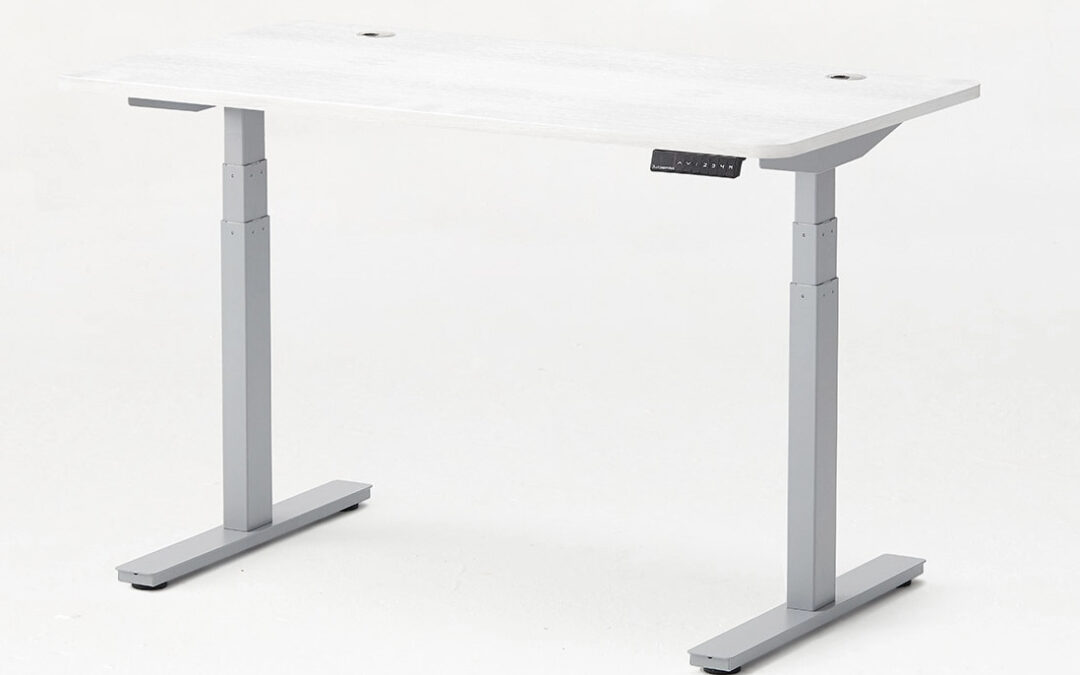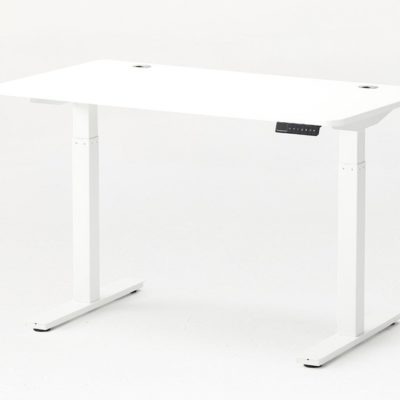I have always had a strong dislike for sitting. Sitting at a desk day in, day out for a specific set time, regardless of the workload or my own personal productivity levels. I believed that I was merely anti-corporate. But I learned after more than a decade working in front of a computer that one thing negatively impacted my happiness and wellbeing, possibly more than the others. That thing was the act of sitting for 8 or more hours every day. It’s simply not a biologically sound thing to do.
At the same time, I read an article by a journalist who travelled to Sweden and noticed something peculiar in the study rooms and research labs of a Swedish university. When he walked by the first time, everything looked normal. As he glanced in the window on his second pass by these offices, some people were standing while working. But they were using the same desks. The Swedes were a decade ahead of the rest of the world in figuring out that a life spent sitting is a life set up for problems.
What Standing Desks did for my physical and mental well-being
I now feel more comfortable working. The claustrophobia (yes, that bad) and stress I felt from being hunched over all day have pretty much disappeared. I can work for longer periods without the need for jumping up and doing pointless stuff just to break the monotony.
Back pain, shoulder pain, neck and arm pain are almost completely a thing of the past. Anxiety from feeling like a caged animal – sitting in a hunched position is known to release cortisol, the body’s stress hormone – is also a thing of the past.
Why Sitting is bad for you?
Described by the scientific community over the past decade as “the new smoking”, sitting is as harmful as the vice that kills 8 million people every year. Prolonged sitting is also killing us. The negative effects of sedentary behaviour are well known, but the solution is less clear. That 30-minute jog you do every morning is not enough to offset the negative effects of the 10-16 hours of sitting you also do every day. Back pain is hard to reverse with a jog in the evening. In fact, it might even make it worse
The Negative Effects of Sitting
With every year that passes, researchers uncover more evidence that excessive sitting, the kind that most of us do, is plain awful for our health. Stand Up Australia, a study which analyzed the activity level of office professionals, found that almost 80 per cent of a worker’s day is spent sedentary. There’s little difference between sitting at a desk and sitting on a couch watching Netflix. And the negative effects are shocking. Prolonged physical inactivity may lead to obesity, diabetes, mellitus, cardiovascular disease, heart disease, Alzheimer’s, depression, and colon, endometrial, and lung cancer.
A sedentary life has a direct correlation with four of the top ten leading causes of death reported by the World Health Organization (WHO).
Importantly, the research tells us that sitting too much, regardless of exercise habits, is a health risk. Office workers who get 30-60 minutes a day of activity are still at increased risk of disease thanks to the deadly effects of inactivity.
Your spin class after the office will not mitigate the damage done by years of sitting all day. Think about it! How many hours do you sit? The average person drives to their workplace and spends their entire workday (including lunch) at their desk. That's 8-10 hours of sitting per day (at the lower end of the scale).
Add television time and screen use in the evening. Sitting on a stationary bike at the gym (yes, this isn't a great way to exercise, stand on the pedals!) is even more time spent in the seated position. If you take your car to make short trips to the shops or drop the kids off at school, then there's very little time left in the day for active moving and standing.
When our legs and hips are almost permanently in a flexed position, as they are when we sit, we begin to experience problems brought on by our hip flexors shortening or becoming tight. Our back and neck muscles start to tighten from the unnatural arch position caused by chairs. Necks and shoulders ache from arching over a desk. The upper back begins to round and slump as fatigue takes over. Our body spends most of the day in a position that, for thousands of years of human evolution, was never forced to adopt.
The solution
The American Medical Association recommended that employers should offer alternatives to sitting, including the use of standing desks or sit stand desks, as they are sometimes called. This trend is much more than simple supposition; we already know that physical activity directly reduces the risks of heart disease, obesity, and diabetes mellitus. But there are more health benefits.
Switching to a desk that lets you easily stand during the day has shown to decrease diabetes risk and blood pressure. A study published in Preventing Chronic Disease is just one of many which revealed that reducing time spent sitting may decrease back and neck pain and may even improve mood. Others have shown that productivity improves when using a standing desk. A study performed at Texas A&M University in College Station, Texas showed that children benefited from the stand up desks; they were more engaged in classroom activities and had better interaction with their teacher.
Studies have found that regular, brief standing reduces blood sugar across the day.
Pretty soon that form you fill out at the doctor’s office will inquire not only about how much you exercise, but also about how much time you spend sitting.
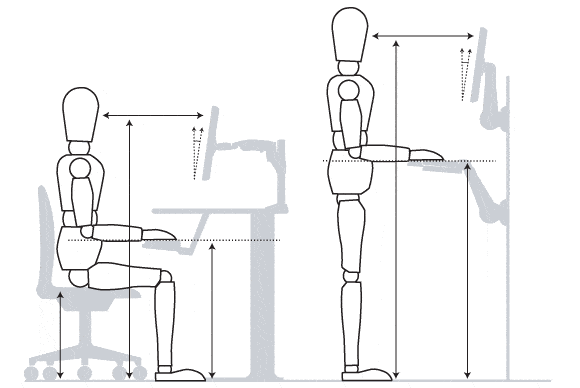
In addition to solid scientific evidence proving the benefits of regular standing, those who are using these desks say they lead to other healthier habits, such as picking healthier lunch choices and walking more often. It’s much easier to walk down the hall when you’re already on your feet than when you’re slumped in your chair.
Pretty soon that form you fill out at the doctor’s office will inquire not only about how much you exercise but also about how much time you spend sitting. Be a good patient and get ahead of the game by noting how much time you spend in a chair or on the couch and then finding ways to reduce it. Doctor's are beginning to prescribe stand up desks and ergonomic workstations to patients. Countries like Sweden have laws that allow office workers to choose standing desks as part of their working setup.
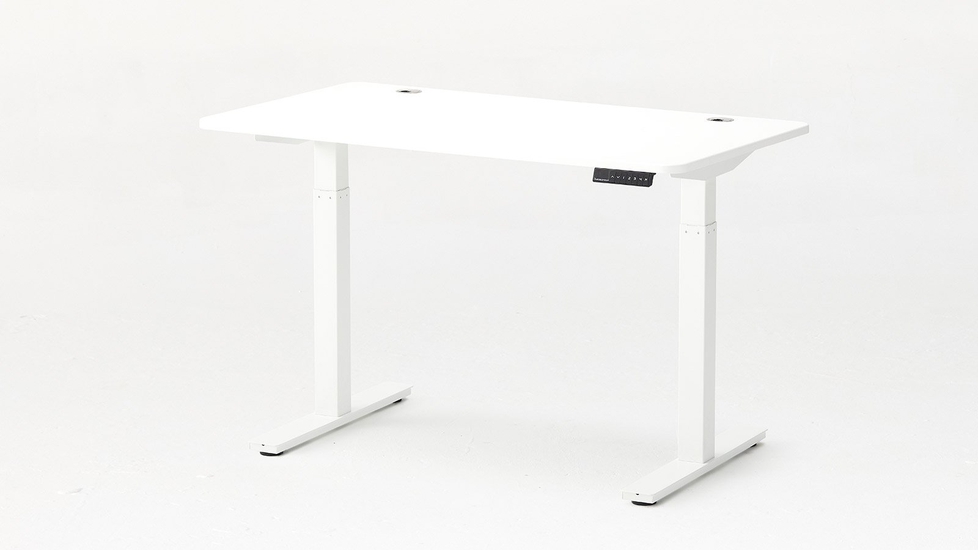
Height Adjustable Standing Desk – Autonomous SmartDesk Core
In 2020, thanks to the Coronavirus pandemic, people are working from home more. And sales of desks have increased dramatically. Workers whose employers refused them special desks at work have taken ergonomics into their own hands.
And these people are not the first to stand at work. Many historical figures did all their best work and were most creative while on their feet.
Which Standing Desk Should I Buy?
Without a doubt, the best electric height adjustable desks on the market today are by Autonomous.ai. Delivery pretty much everywhere in the world: US, Canada, and Europe delivery times are fast and almost every country is serviced. Standing desks will soon be part of the standard office furniture and work from home essential tools.
Autonomous desks are dual motor, reliable, come with a great warranty, and are pretty great value if you compare them with other models available.
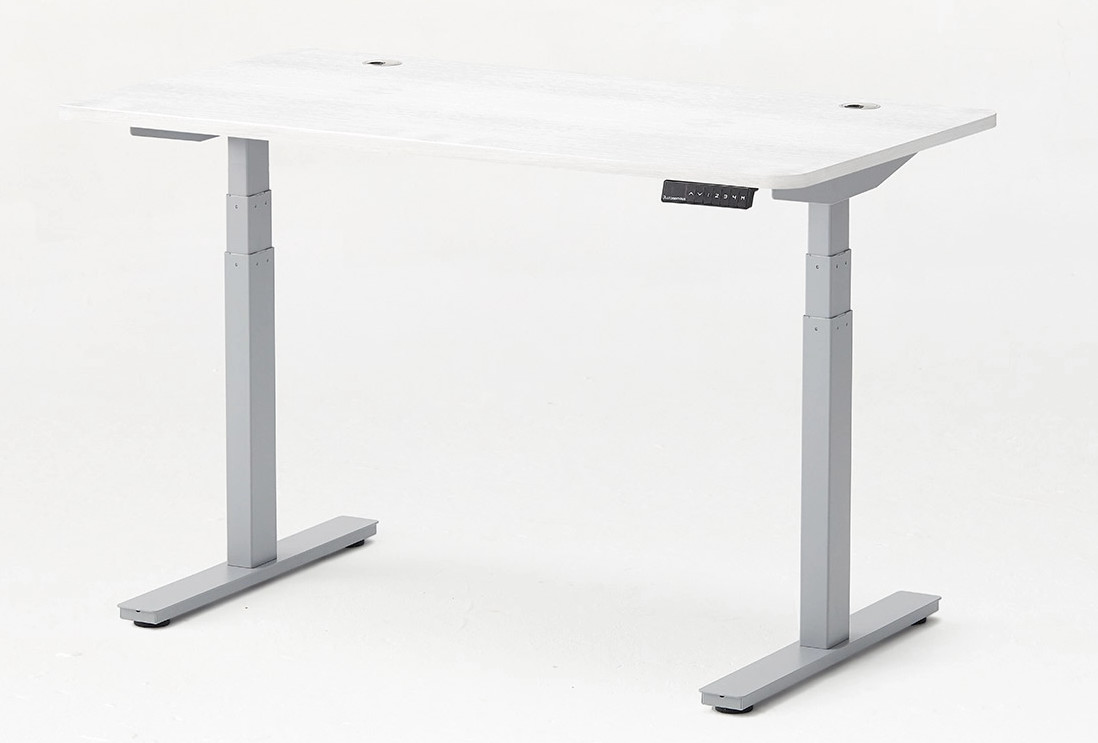
Famous Standers
Some of the smartest people have routines and methods for being creative. Some like to get in a car and drive for inspiration. Other immerse themselves in water. These are not practical examples for most people, but the following list of writers, creators and world-changers worked best while standing. Their creativity was helped by their improved posture and overall well-being thanks to not being slumped over a desk for 8-10 hours a day.
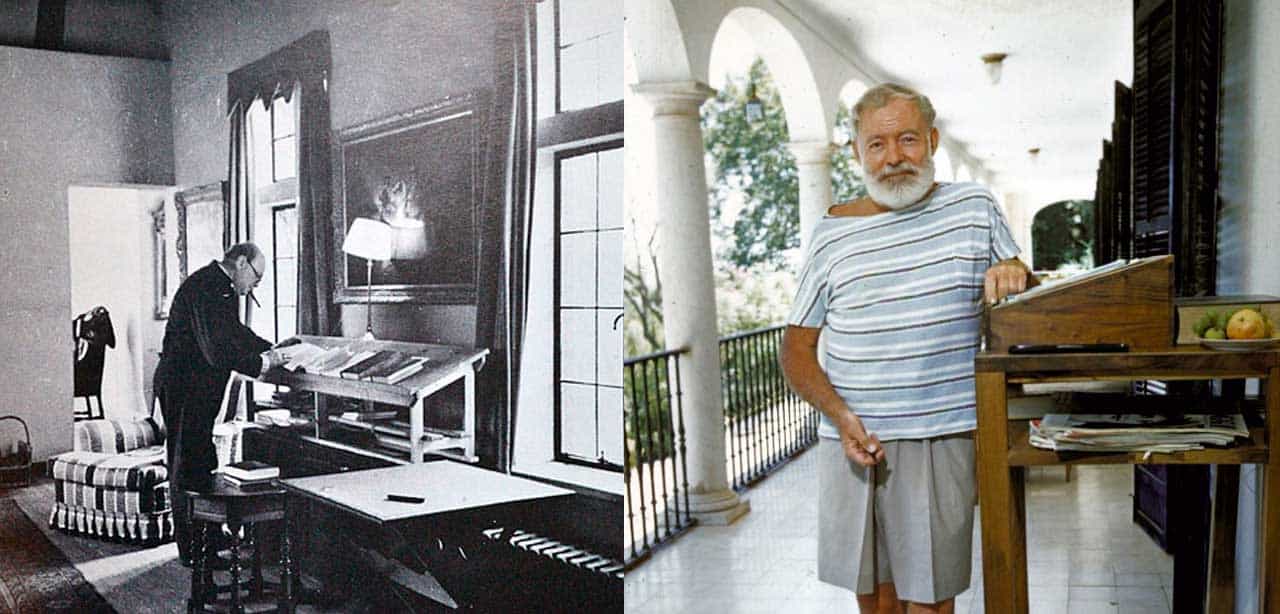
Ever wondered how great minds think and which tools these people use to aid their thought processes? Many creative people have used sit to stand desks as aids to more productivity at work. Working while seated (in a sedentary job) can be antagonistic to the creative process. Sitting puts the body in an unnatural position. The slumped over posture and rounded spine is reminiscent of how animals and humans showed submission and fear throughout evolution. When you're afraid of something the body sends out hormonal responses. You protect the most important parts of the body by folding over and making yourself smaller. Hunching over your desk at the office sends signals to the body and brain that are similar signals (to a lesser effect) to the ones our ancestors experienced when faced with an aggressor or stressful situation.
Creative juices don't flow when we're fearful, except perhaps for figuring out clever ways to escape. Obviously, stressed cannot perform their life's best work. People that have bodies stressed from sitting all day will not harness the full power of their potential.
Stand up and see how you feel. Can you think more effectively? Can you write with greater clarity? Now that your chest is more open can you feel more air circulating in the lungs? Do you feel more confident?
Many people that work like this realized the potential of allowing the body to breathe and to move naturally. For most of the people on the following list, a height-adjustable standing desk was not an option. Nor were anti-fatigue mats. Technology has moved on to the point where we can combat the problems that older technology, such as the chair and table, brought us. Today, we can all use desks that allow us the freedom to sit and stand whenever we want. What would Da Vinci, Ben Franklin, and Nabokov have thought of that?
- Leonardo da Vinci, an Italian Renaissance polymath: painter, sculptor, architect, musician, mathematician, engineer, inventor, anatomist, geologist, cartographer, botanist, and writer.
- Ernest Hemingway, an American author and journalist.
- Winston Churchill, a British politician who was the Prime Minister of the United Kingdom from 1940 to 1945 and again from 1951 to 1955
- Søren Kierkegaard, a Danish Philosopher, theologian, poet, social critic, and religious author who is widely considered the first existentialist philosopher.
- Virginia Woolf, an English writer considered as one of the foremost modernist writers of the twentieth century.
- Thomas Wolfe, a major American novelist of the early twentieth century.
- Vladimir Nabokov, an American novelist who was born in Russia.
- Thomas Jefferson, author of the Declaration of Independence and the third President of the United States of America.
- Donald Rumsfeld, former U.S Secretary of Defense.
- Charles Dickens, an English writer and social critic, generally regarded as the greatest novelist of the Victorian Period.
- Michael Dell, an American business magnate, investor, philanthropist, and author
- Benjamin Franklin, one of the Founding Fathers of the United States of America.
- Philip Roth, an American novelist.
- Lewis Carroll, an English writer, mathematician, logician, Anglican deacon and photographer.
- Donald Rumsfeld, an American politician and businessman.
Tips for Standing At Work
Pay attention to your posture. Bad posture will cause you issues whether you’re sitting or on your feet. Your ears, hips, and knees should all be in line. If your hips are too far forward or back your spine is in a less than optimal position. Posture affects everything from the well-being of your spine to how people perceive you.
- Try to unlock your knees to remove strain. If you can stand with a slight bend in the knees for small periods of time, this will help improve flexibility, and strength in the quads.
- Try using a block to perch one foot. Or use an inclined surface, or a massage ball under the feet to vary the level.
- Get an anti-fatigue mat to take the load off your feet
- Walk around occasionally to loosen up the legs. This will be much easier to do regularly as you’re already on your feet. If possible, try squatting down a couple of times to loosen the lower back and put the legs into a different position. Squatting and sitting are two very different movements. Squatting is a natural human position. Sitting is definitely not.
- Use a monitor at eye level. Try to maintain a neutral spine position and save your neck muscles by keeping your eyes straight ahead. Basically, try not to look down while you work. Your desk setup is very important here and even your office chair plays a huge part. Choose wisely.
- Do yoga regularly to strengthen your core and to maintain good posture, which in turn will make standing less tiring.
- Change the office furniture to be more conducive to standing. Tall tables, fewer seats, and more space to move around.
- Try to plan meetings at your desk and only make one chair available so everyone will have to stand. Sit for lunch and sit for breaks but otherwise, try to plan your day around strategic periods of standing. Spending 1-2 hours a day moving around or standing will make all the difference.
- Exercise early in the day to get the blood flowing and the muscles primed.
- When answering the phone try to stand or pace if possible.
- Walk in the footsteps of CEOs like Mark Zuckerberg, who promote strolling around the block during meetings. Walking meetings have since become quite popular in Silicon Valley. Unfortunately, the Irish weather doesn't permit this activity year-round (and even in the summer) but we should take any opportunity to walk during meetings as the mental health benefits are far-reaching.
Where it goes wrong
Humans look for shortcuts in everything. If there’s a way to save time, do less, reduce energy expenditure, and avoid discomfort, humans always find the path of least resistance. It’s in our nature to avoid discomfort and pain. And this is why people who take to standing at work start to feel as if they no longer need to exercise. It’s as if the act of standing will solve all their health problems and free them up from any form of inconvenient and uncomfortable physical exercise. Not true. You still need to exercise just as much as before.
Another consequence of moving to a standing desk is the issue of too much time on your feet.. This comes with its own set of problems. There should be a balance, especially for new adopters. Alternate between positions throughout the day and don’t let pain and fatigue ruin your posture.
This video from TedEd explains why sitting is bad for you. Watch this video! Your health depends upon it.
People are starting to stand up for their health.
The answer to the question, “should you buy a standing desk?” is yes.
What are your thoughts? Have you bought a new desk or are you thinking about getting one? Why did you buy a sit-stand desk or what's stopping you from getting one? Let me know in the comments.
Frequently Asked Questions
Will using a sit stand desk help me burn calories?
The short answer is yes. The realistic answer is that the actual calories burned from being in the standing position compared to sitting is so small that it's not worth thinking about. Don't buy a sit-stand desk if your main goal is weight loss. It won't really make a difference.
Is standing all day bad for you?
Standing all day is not good for you. There's no compelling reason to spend the entire day standing. Mix up your standing with sitting on a high chair with legs extended, sitting in a different position, sitting on the floor, lying down, and walking.

